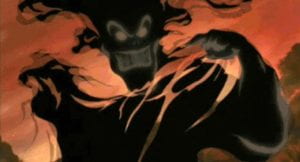What do a self-proclaimed “duck queen”, a mud-tasting researcher, an aerial photographer, a shrimper, and a young member of the United Houma Nation all have in common?
While this may sound like a set up to a strange joke, what unites them isn’t a joke at all: Louisiana’s coasts, barrier islands, and wetlands are disappearing, and they’re all extremely concerned about what that means for the future.
The Smithsonian Channel’s Last Call For the Bayou highlights five different stories that show how climate change and other environmental issues affect Louisiana and its residents, how they will affect them in the future, and what people are doing about it.
Last Call for the Bayou takes you to every corner of southern Louisiana’s complex wetland ecosystems. Its barrier islands protect cities like New Orleans from extra-severe flooding and also serve as wetland habitat for many different creatures– and people. But as sea levels rise, what once was freshwater becomes saltwater, and freshwater plants die at alarming rates, these wetlands have begun to literally erode away. Their erosion not only takes away thousands of feet of coastline but flood protection and ways of life as well.
For the Houma nation, the salinization of their homeland is extremely personal. You can see it in one elder’s face and hear it in his voice. Though the feeling of listening to his cajun accent is warm, hearing him describe how some lands have gone with the tides will likely turn your blood cold.
One child participating in a program for Houma youth may have put it best when saying, “The soil is more than just soil and dirt, it’s our ancestors, and, like, more and more of our heritage and our ancestors are going away with the water.”
Cultural preservation, for the Houma, serves as a unique form of climate preparation and adaptation for an uncertain future. Loss of land is a loss of culture, and because of this, there are elders and younger members alike working to preserve the Houma culture and pass it on to the younger generation. Alongside teaching Houma youth about their shared culture, Houma member and sociology student Kasha Clay works on collecting oral histories of the Houma nation to preserve their culture in the face of what could potentially be a huge climate and cultural shift as salinity levels rise with the seas.
Fortunately, Louisiana’s state legislature has implemented the construction of river diversions to help rebuild wetlands and coastline in southern Louisiana. These diversions redirect sediment and allow it to settle in new places, rebuilding the land that was once eroded away. For the United Houma Nation and many other communities in southern Louisiana, diversion efforts represent at least a partial solution, restoring the deep beautiful greens of Louisiana’s wetlands grain by grain.
While various communities, both Indigenous and settler, have important reasons for supporting the restoration of wetland habitats of southern Louisiana, not everyone is pleased by the desalination of the water. Gleason Alexis, the shrimper highlighted in episode four of Last Call for the Bayou, “Sink or Swim”, has been shrimping for decades and needs the saltwater to produce profitable catches, but he’s also seen his own family’s land weathered and altered by the chemical change of the water over the years. His story is an example of how climate adaptation can be complicated, and how climate adaptation efforts have to consider that there are many sides to a story.
But how did the wetlands of southern Louisiana reach such a degraded state in the first place? Aerial photographer Ben Depp might have put it best when he said, “everything is exploited one way another.” Considering the presence of oil, gas, and petrochemical industries exacerbating already precarious environmental conditions in southern Louisiana, Depp isn’t wrong.
Environmental issues are, unfortunately, extremely abundant in southern Louisiana. The series highlights the ways environmental problems have compounded and produced the circumstances that have southern Louisianians so worried about their home.
Last Call for the Bayou combines beautiful images of southern Louisiana’s wetlands with the true stories of Lousianians trying to find ways to restore wetlands and keep their home theirs. Though not the most hopeful of docuseries, it refuses to back down from the harsh reality of climate change, environmental degradation, and the challenges of adaptation. If you’re interested in expanding your knowledge about southern Louisiana’s environment, Louisiana-specific adaptation, seeing bayous, or hearing extremely comforting accents, this series is for you.
Last Call for the Bayou is available to stream on the Smithsonian Channel as well as Youtube.





